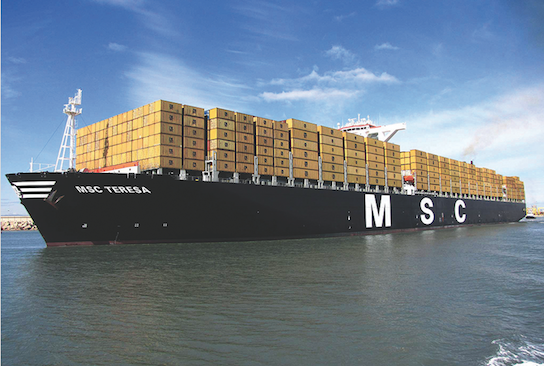Marketing 101 (Brand Development) for shipping companies

In any industry, business, or profession it is easy to be distracted by the latest sparkly toy. An easy distraction would have been to kick off my Splash contributions with a mildly provocative commentary on social media trends and their relevance to the shipping sector. But sometimes it is best to take a step back and start at the beginning. And if we are to be honest, and still mildly provocative, perhaps some of the basics actually need close attention. Branding, marketing, communications, media relations and, of course, social media are all topics the shipping industry needs to understand better if we are to improve our image.
Shipping has an image problem. As both a collective and as individual companies we struggle to articulate our value to the world economy, to attract new people to the sector, and to draw public attention to issues that affect us at sea and onshore. Within the shipping community there is undoubtedly frustration at the lack of respect our industry commands…ahh for the good old days of 1926, when we were the centre of global communications.
Does Shipping Care?
When you’ve got your name written in 20 foot high letters on the side of your vessel, it could be assumed that you have some understanding of marketing and brand exposure. Most of us even have websites. So yes, I believe most shipping companies do care about their names and brands. But I would question how much strategy and planning goes into the average shipping company’s marketing efforts. So…Marketing 101…a refresher course.
What’s in a brand?
Anything can have a brand. A person, a company, a service, or a product can all develop a unique identity. In a nutshell, a brand is the view others hold of you, your products, or your services. A brand outlines the way you do business and the expectations and trust people put in you. At this point branding gets a little ‘fluffy around the edges’…marketing types start talking about emotions and feelings. Let’s not go down that path.
Are brands important? It’s a question worth thinking about. Most consumers (you included) make purchases based on brand rather than actual knowledge of what goes into a product. You appoint service providers (e.g. lawyers and accountants) because of the firms they work for rather than your own specific expert legal or auditing knowledge. No one ever got fired for appointing McKinsey’s, so the saying goes. When you are pitching for work and a client has a choice, a strong brand certainly helps.
What makes a good brand?
So, what makes a good brand? Good brands usually have simple powerful messages behind them. You don’t need to spend a lot of money to develop your brand – nor do you need a brand new logo and lots brochures. From experience, the hard part is concentrating on your key messages, rather than trying to cover every possible marketing scenario. Generally speaking, a strong brand is built around the following:
- Understand your target market. The more targeted your branding and communications can be the better. Chances are you are not a major retail chain – which means your marketing can be targeted quite specifically. Have a think about what your clients really need from you, and what makes a real difference to them.
- Stand apart from the competition and create your own identity. Consider what your company is going to be known for. Why are your clients loyal?
- Stamina and consistency. Both your communications (marketing), and service standards should be consistent. In the context of building a brand, this means articulating your brand values again and again. A brand takes time to build.
- Passion and drive. Most clients have a choice of who they buy from. If you and your team obviously have a passion for what you do, this will help drive sales and repeat business.
- Are you reaching your target audience? This means more than taking a fleet manager to lunch every now and then. Not that a free lunch isn’t a useful tool….but is that all you’re going to be known for – a free lunch? If your target market demands specific expertise, you should be painting yourself, or your business, as the go-to expert.
- Strong leadership moves the value of your brand beyond a product or service. This is why the great brands of our time are so closely identified with certain individuals – think Henry Ford, Bill Gates, Steve Jobs, and Richard Branson. Championing a brand takes commitment from bottom to top.
Marketing and Brand strategy
None of the above is relevant without a sound marketing strategy. Mission, vision, values and corporate leadership are central to giving your branding efforts direction and purpose. The best marketing and communications efforts will not work if there is uncertainty as to what they are trying to achieve. Individual marketing teams might understand this – but does everyone else in the company? Everyone who is part of a business needs to live the brand – a brand is the common thread linking the services your company provides to your clients. As marketing tactics respond to new trends, such as social media, a unified approach to your company’s brand means even more.
At the macro level, the shipping industry needs to build its common image and improve its reputation. An important part of this is for all companies to pay attention to their individual brands. It’s a two-way street – one company helps build the overall industry image and the industry as a whole can help one company build a brand.
